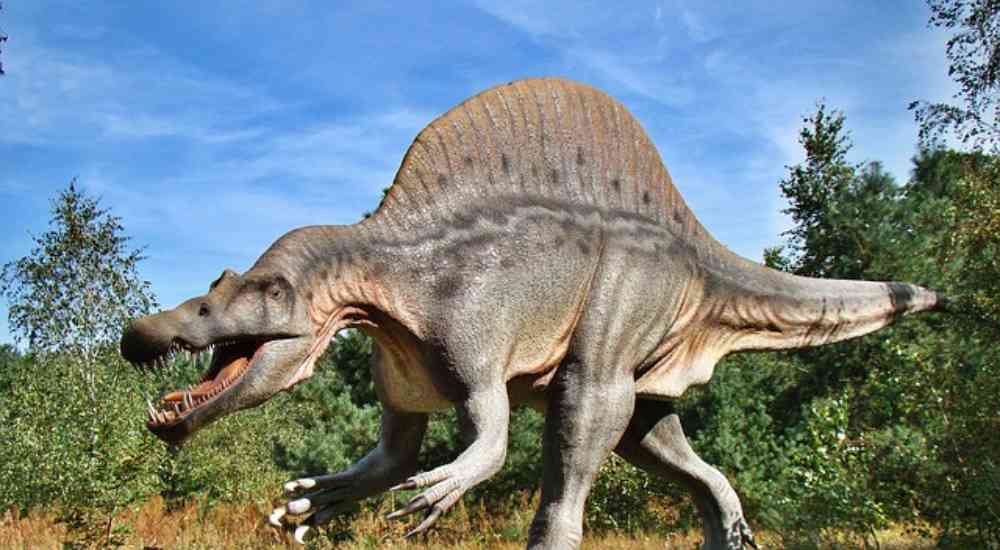National Dinosaur Day is observed on May 15 and June 1. People of all ages, from young to old, celebrate this day to relive their most fascinating dinosaur fantasies. The day is dedicated to the prehistoric creatures that once roamed the Earth.
This day is a great opportunity for dinosaur enthusiasts to celebrate and learn more about these fascinating creatures. In this article, we will explore the history and significance of National Dinosaur Day.
History of National Dinosaur Day
Dinosaurs first appeared in the Triassic period, around 231 million years ago. They ruled the planet for more than 160 million years before going extinct at the end of the Cretaceous period.
The “Age of Dinosaurs” refers to the Mesozoic Era, which lasted from approximately 252 to 66 million years ago. Dinosaurs were among the many plant and animal species that inhabited the Earth at this time.
It is believed that dinosaurs evolved from small reptiles and diversified into various forms. They are categorized as archosaurs, a type of diapsid reptiles that also includes crocodiles and birds.
Based on the shape of their hips, dinosaurs can be divided into two main groups: Saurischians (lizard-hipped) and Ornithischians (bird-hipped).
Saurischians include the carnivorous theropods and the herbivorous sauropods, while ornithischians include various herbivorous species such as the Stegosaurus and Triceratops.
The Tyrannosaurus Rex, Velociraptor, Stegosaurus, and Triceratops are some of the most famous dinosaurs that existed million years ago.
Dinosaurs are often depicted in many popular media, such as movies, TV shows, and video games, sparking interest. These creatures still hold a special place in our imaginations
The Natural History Museum of Los Angeles County presented the inaugural National Dinosaur Day in 2015. Since then, the holiday has grown in popularity, and numerous museums, parks, and institutions participate in the festivities around the globe.
Timeline
| 1824 | A Non-Avian Dinosaur is Finally Revealed | William Buckland describes a non-avian dinosaur in a scientific journal. |
| 1903 | The Tallest Dinosaur | A fossil of a brachiosaurus that is 75 feet long and 40 feet tall has been discovered! |
| 2005 | Scientists Find Tissue in a Tyrannosaurus Fossil | Soft tissue is found within a 68-million-year-old tyrannosaurus fossil by Mary Higby Schweitzer. |
| 2017 | The Last Living Dinosaur | According to scientists, the African T. rex was the final dinosaur to survive before it went extinct. |
Significance of National Dinosaur Day
National Dinosaur Day is not just a fun holiday to celebrate; it’s more than that. This day highlights the importance of studying dinosaurs and their role in scientific discoveries. We can learn about our world’s past, present, and future by studying dinosaurs.
Paleontologists, scientists who study fossils, play a crucial role in uncovering the secrets of these prehistoric animals. Their findings have led to many scientific discoveries, such as understanding how dinosaurs moved and evolved into birds.
The history of life on Earth, including the circumstances that led to the extinction of the dinosaurs at the end of the Cretaceous epoch, can be reconstructed by paleontologists using fossil evidence.
National Dinosaur Day also honors the accomplishments of researchers and their commitment to solving the puzzles of ancient life. Without their dedication, we wouldn’t know as much as we do now about the interesting creatures that formerly ruled the Planet.
How to Celebrate National Dinosaur Day?
There are many fun and exciting ways to celebrate National Dinosaur Day. Here are some ideas:
1. Visit a Natural History Museum: In celebration of National Dinosaur Day, several natural history museums will host special exhibitions and events. Visiting a museum is a fantastic method to learn more about dinosaurs and their environments.
2. Watch a Dinosaur Movie: There are many movies and documentaries about dinosaurs that you can watch on National Dinosaur Day. From Jurassic Park to Walking with Dinosaurs, there are plenty of options.
3. Read a Book About Dinosaurs: One excellent way to learn about these extinct animals is to read a book about dinosaurs. Many books on various dinosaur-related topics are available for adults and kids.
4. Host a Dinosaur-themed Party: A great way to honor National Dinosaur Day with friends and family is to host a party with a dinosaur theme. You can decorate your home with dinosaur-themed decorations, play dinosaur-themed games, and serve dinosaur-themed food.
5. Create Dinosaur Art: If you feel creative, you can create dinosaur-themed art like drawings or paintings. This is a fun and educational way to celebrate National Dinosaur Day.
6. Visit a Paleontological Site: Many states have paleontological sites where fossils have been discovered. These sites offer a unique opportunity to learn about the history of these creatures and how they lived. You may even be able to participate in a fossil dig and find your own dinosaur bones!
Some Fun Facts About Dinosaurs
- The word “dinosaur” comes from the Greek words “deinos” which means terrible, and “sauros” which means lizard.
- Dinosaurs first appeared around 230 million years ago during the Mesozoic Era.
- The largest dinosaur ever discovered was the Argentinosaurus, which was over 100 feet long and weighed around 100 tons.
- The smallest dinosaur ever discovered was the Anchiornis, which was only about 12 inches long and weighed around 11 ounces.
- Some dinosaurs had feathers, not just scales.
- Scientists have discovered more than 700 different species of dinosaurs.
- The first dinosaur fossil was discovered in 1824 in England by Mary Ann Mantell.
- Some scientists believe that some species of dinosaurs may have had feathers to display or regulate their body temperature.
- Some dinosaurs, like the Stegosaurus, had a second brain in their hips to help control their massive bodies.
- Dinosaurs lived on Earth for about 165 million years.
Conclusion
To sum up, National Dinosaur Day is a fun and educational holiday that celebrates dinosaurs’ intriguing science and rich history. It encourages us to value the variety of life on our planet and discover more information about the extinct animals that once ruled it. Celebrate National Dinosaur Day with us on May 15th, and let’s go back in time to discover the wonders of the prehistoric world.
National Dinosaur Day Dates
| Year | Date |
| 2023 | May 15 and June 1 |
| 2024 | May 15 and June 1 |
| 2025 | May 15 and June 1 |
| 2026 | May 15 and June 1 |
| 2027 | May 15 and June 1 |
Most Frequently Asked Questions
Q. What Caused the Extinction of Dinosaurs?
Ans: The most widely accepted theory is that an asteroid’s impact caused a global climate change, leading to the extinction of dinosaurs.
Q. Did All Dinosaurs Have Feathers?
Ans: No, not all dinosaurs had feathers. Some theropod species, like Velociraptor and Tyrannosaurus, had feathers, while other dinosaur species, such as sauropods and ornithischians, did not. In fact, it’s believed that some theropod dinosaur species lost their feathers as they grew larger and more apex predator-like over time. Our knowledge of the appearance and evolution of dinosaurs has significantly changed due to the finding of fossils of feathered dinosaurs.
Q. What Year Were the Dinosaurs Extinct?
Ans: The dinosaurs went extinct approximately 66 million years ago, at the end of the Cretaceous period. Although the exact cause for their extinction is unknown, most scientists concur that it was likely caused by a mix of circumstances, including a significant asteroid impact, volcanic activity, and climate change. The majority of the dinosaur species, along with numerous other plant and animal species, perished due to this event.
Q. Do Dinosaurs Have Milk?
Ans: No, dinosaurs did not produce milk. Mother mammals create milk, a unique fluid to give their offspring nourishment and antibodies. Dinosaurs, however, were not mammals and did not possess the mammary glands necessary for producing milk. Instead, female dinosaurs lay eggs from which their offspring hatch. The young dinosaurs would not have needed milk to survive after hatching because they would have been self-sufficient.
Q. Where Can I See a Dinosaur?
Ans: According to “USA Today,” the 10 best places to see dinosaurs in the U.S. are:
1. Academy of Natural Sciences, Philadelphia.
2. Dinosaur National Monument, Colorado/Utah.
3. Universal Studios Islands of Adventure, Orlando.
4. Field Museum, Chicago.
5. Royal Tyrrell Museum of Paleontology, Alberta, Canada.
6. Fernbank Museum of Natural History, Atlanta.
7. American Museum of Natural History, New York City.

